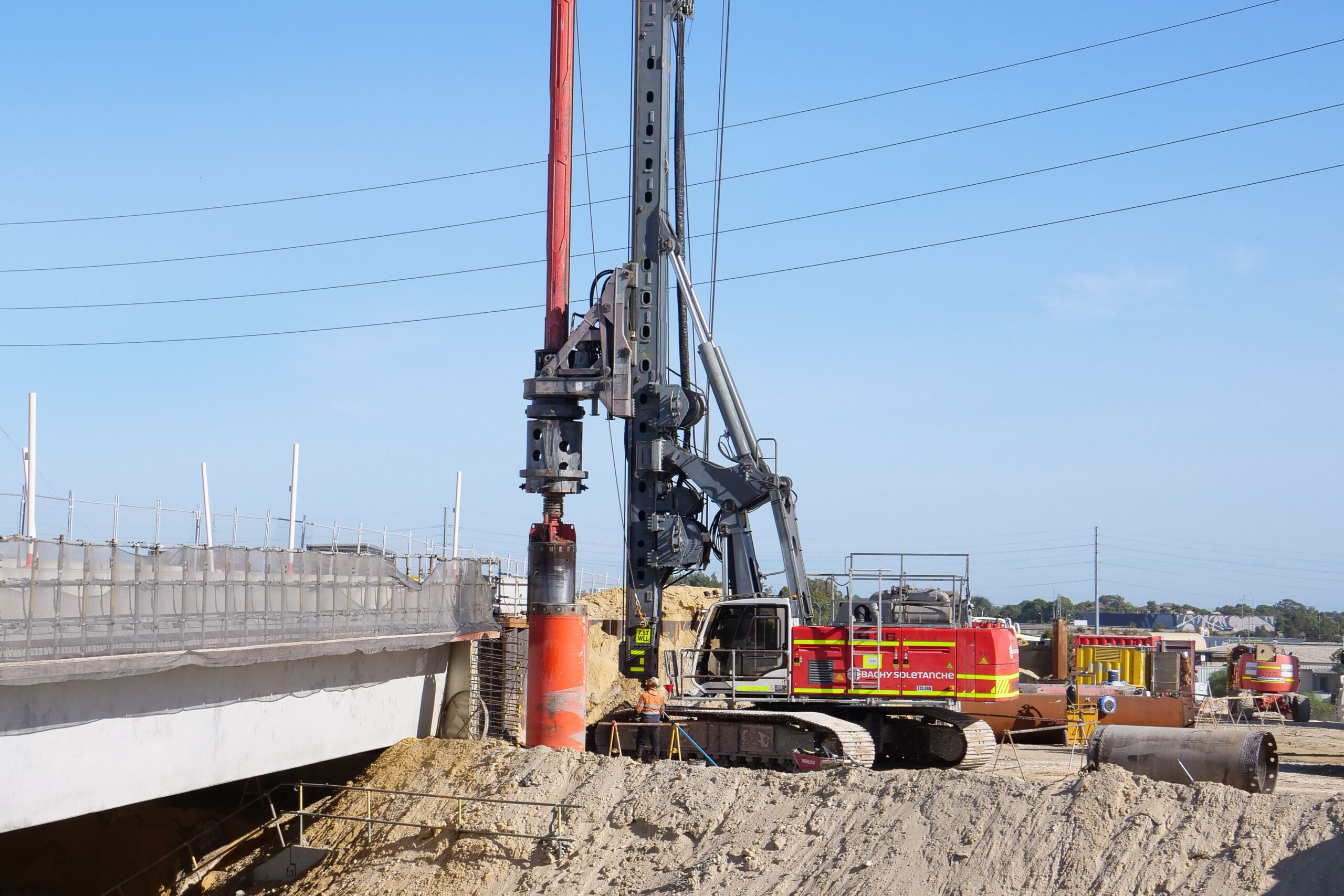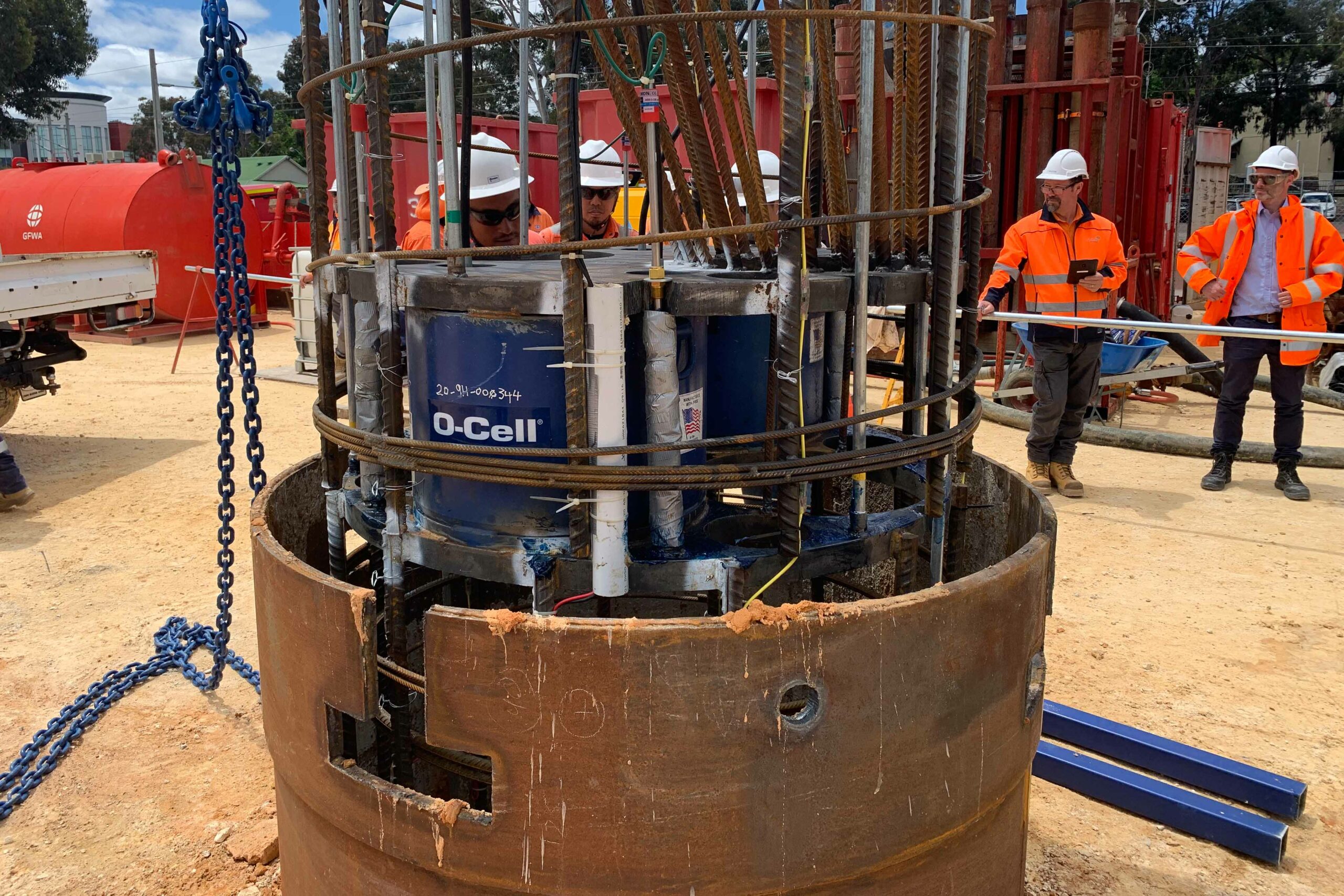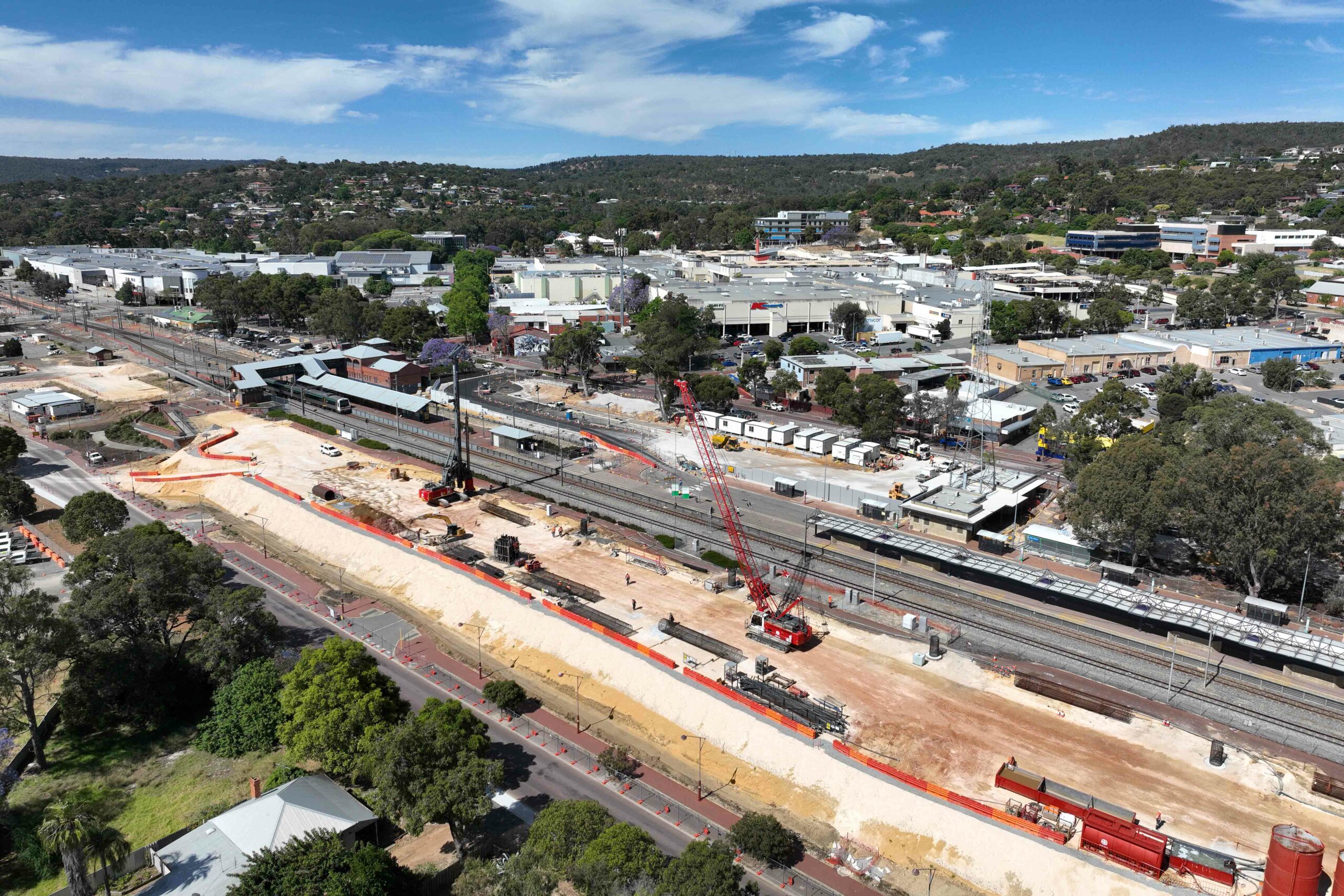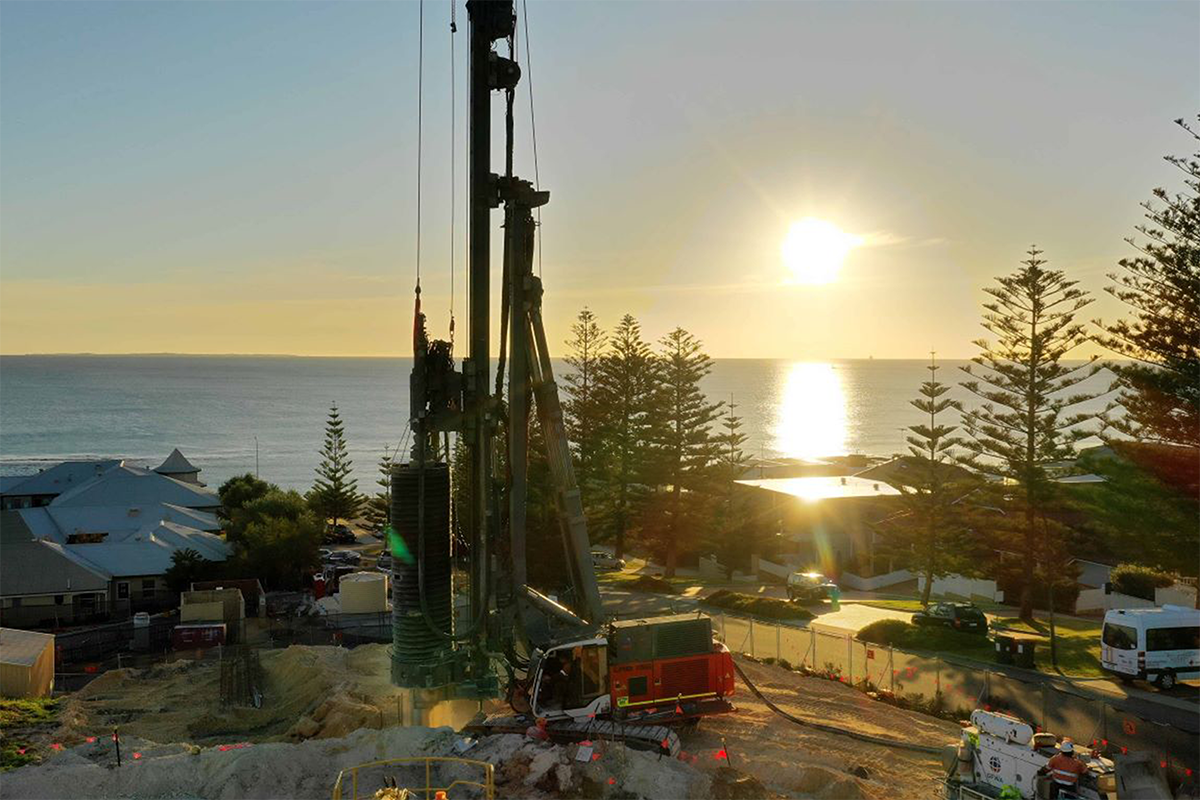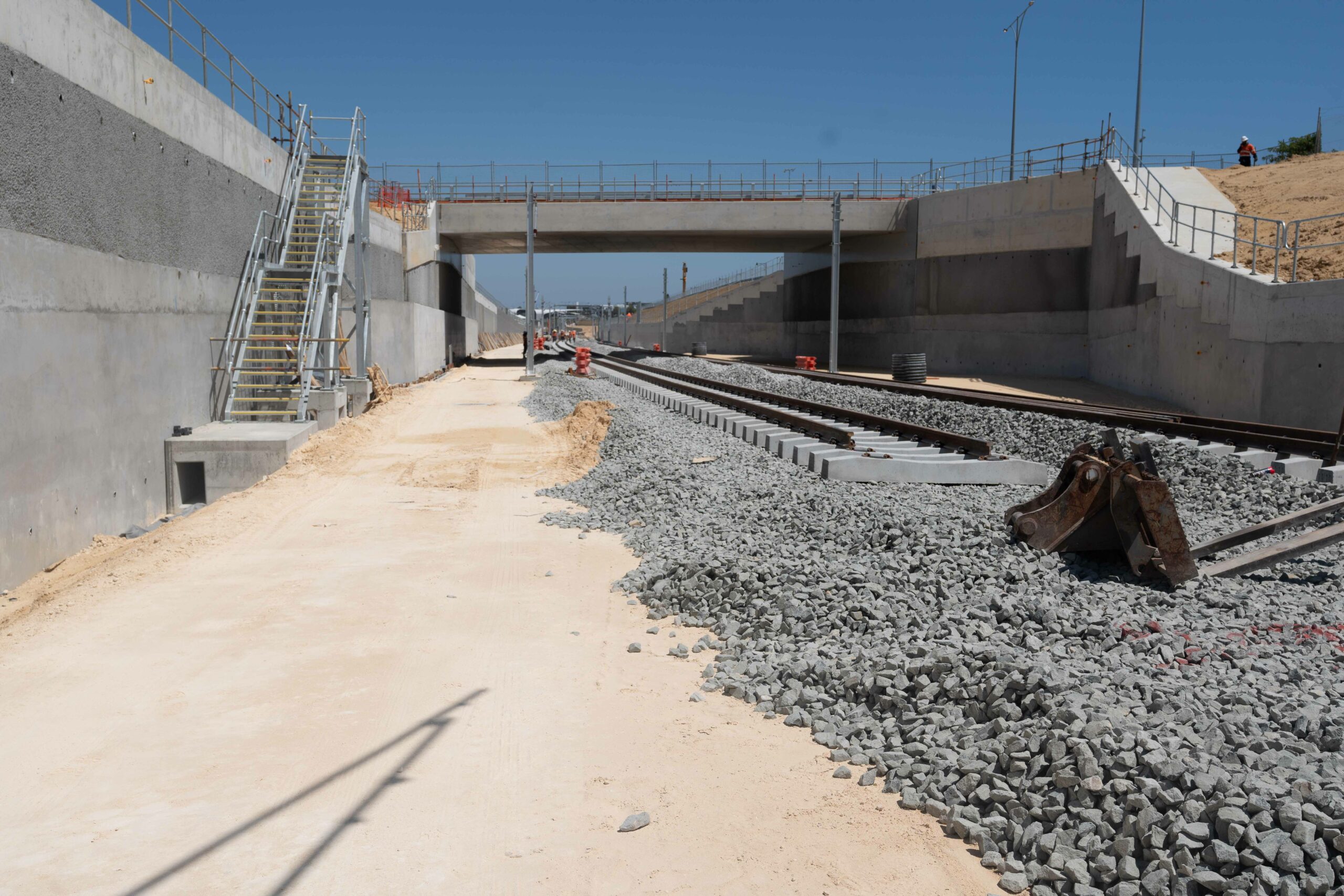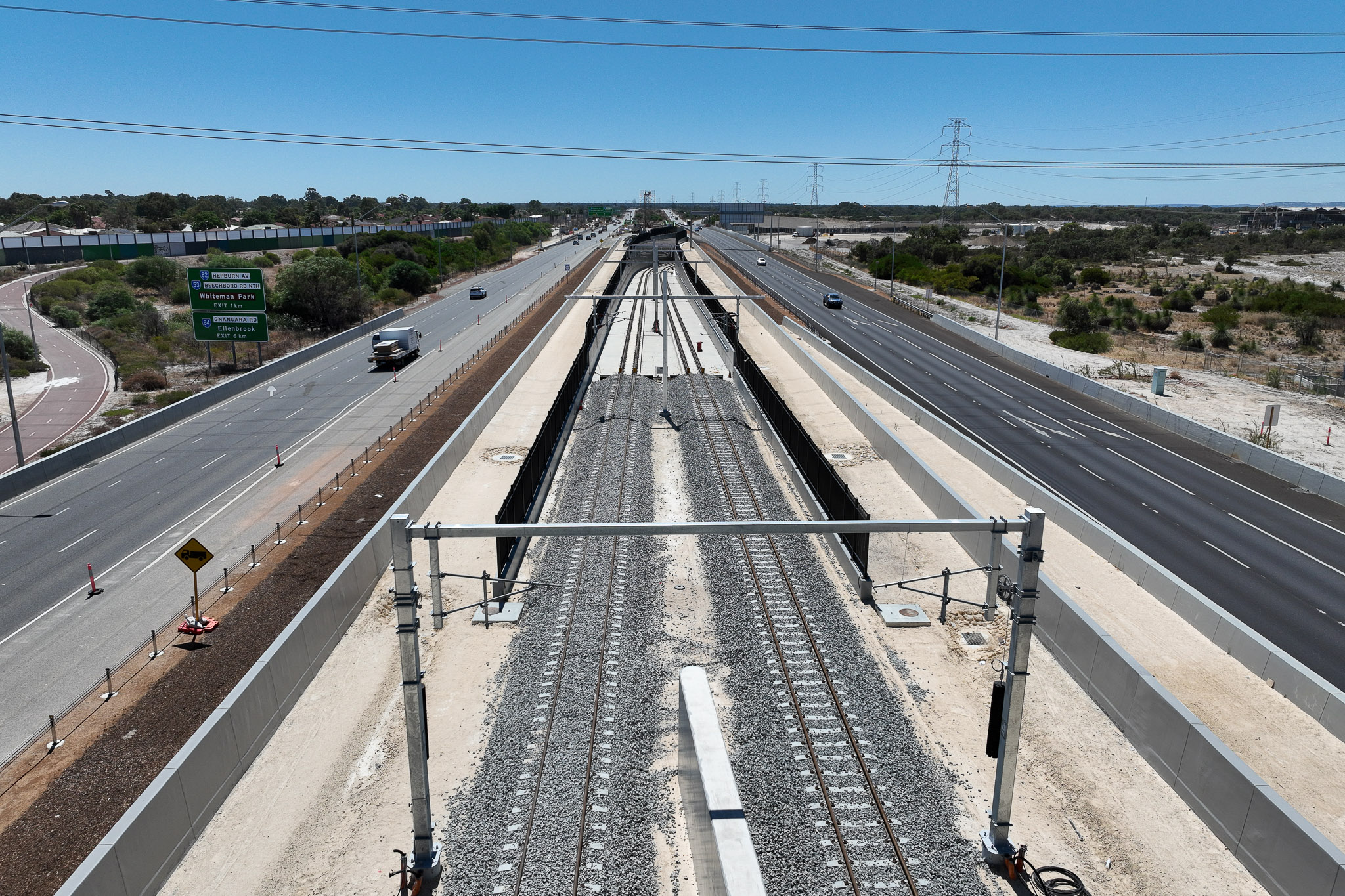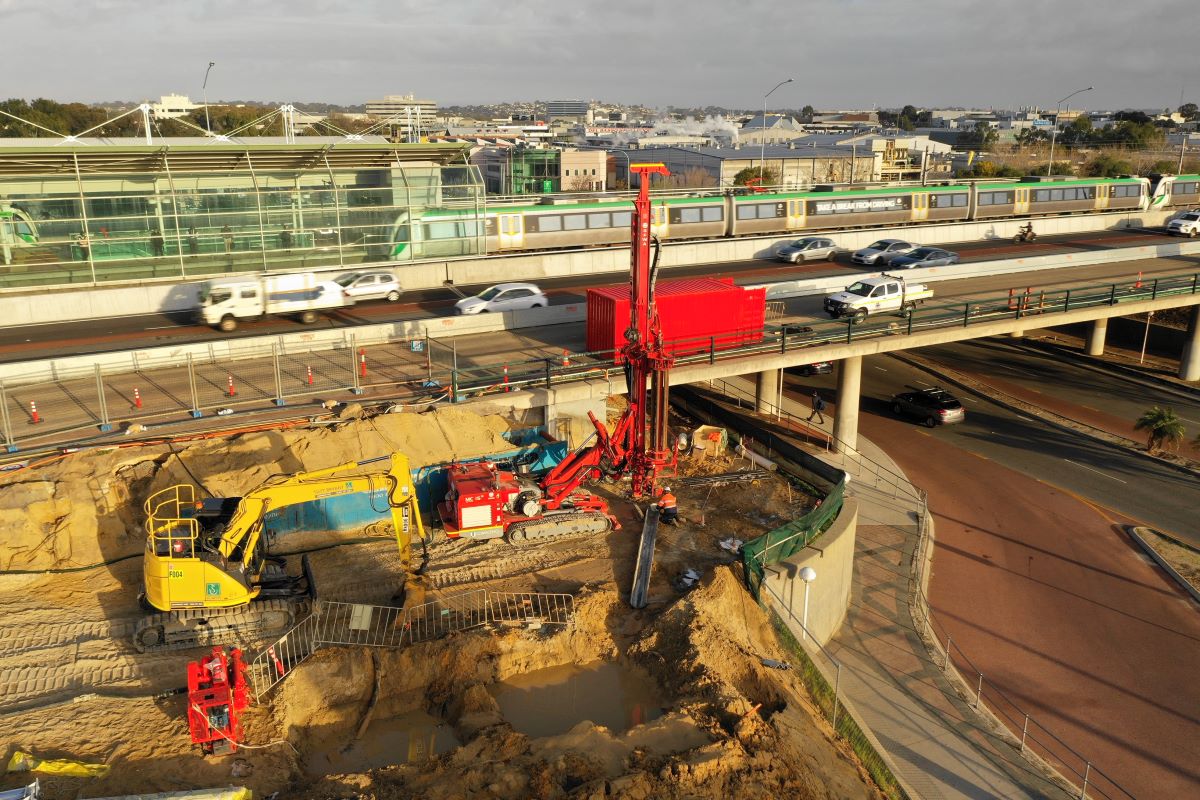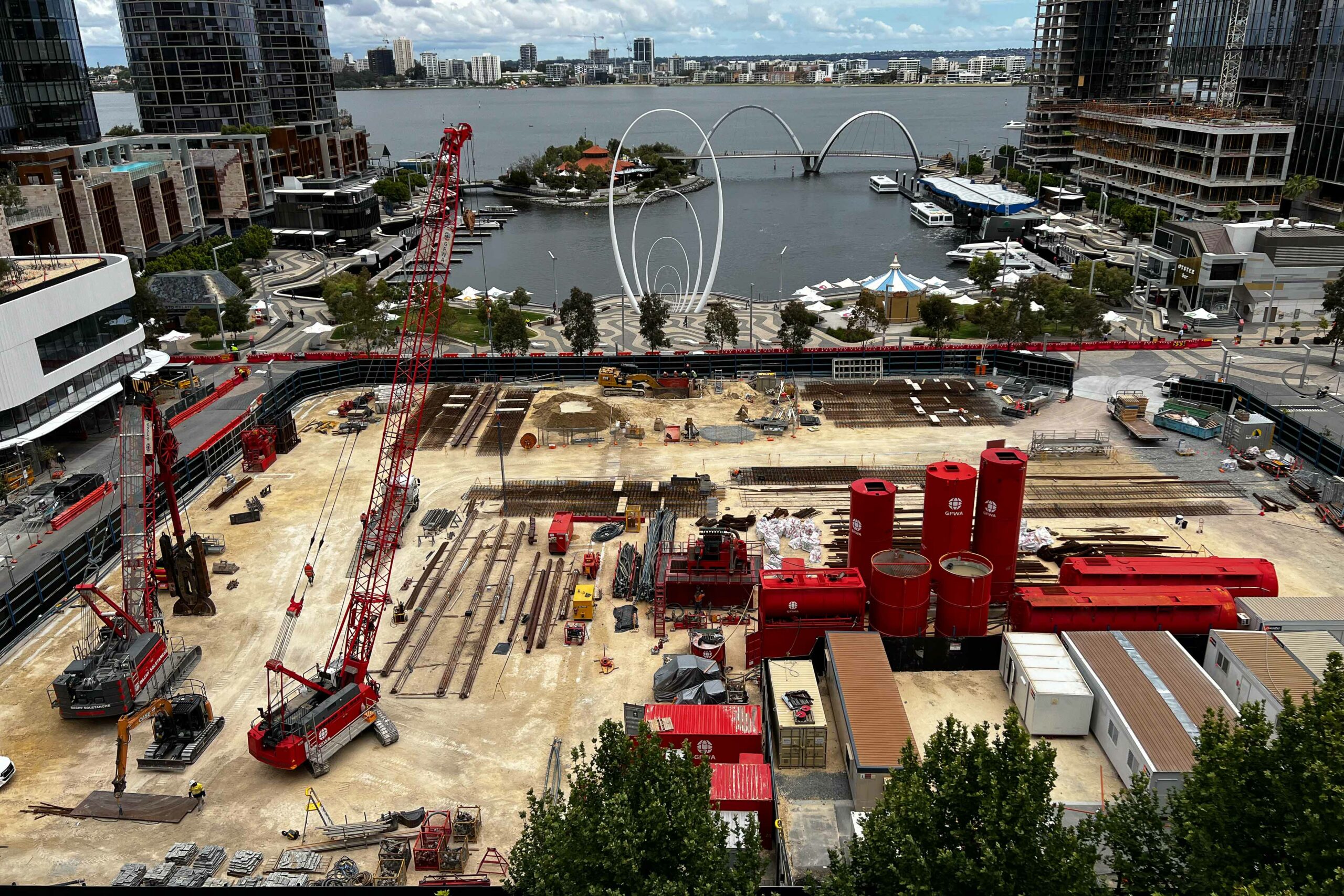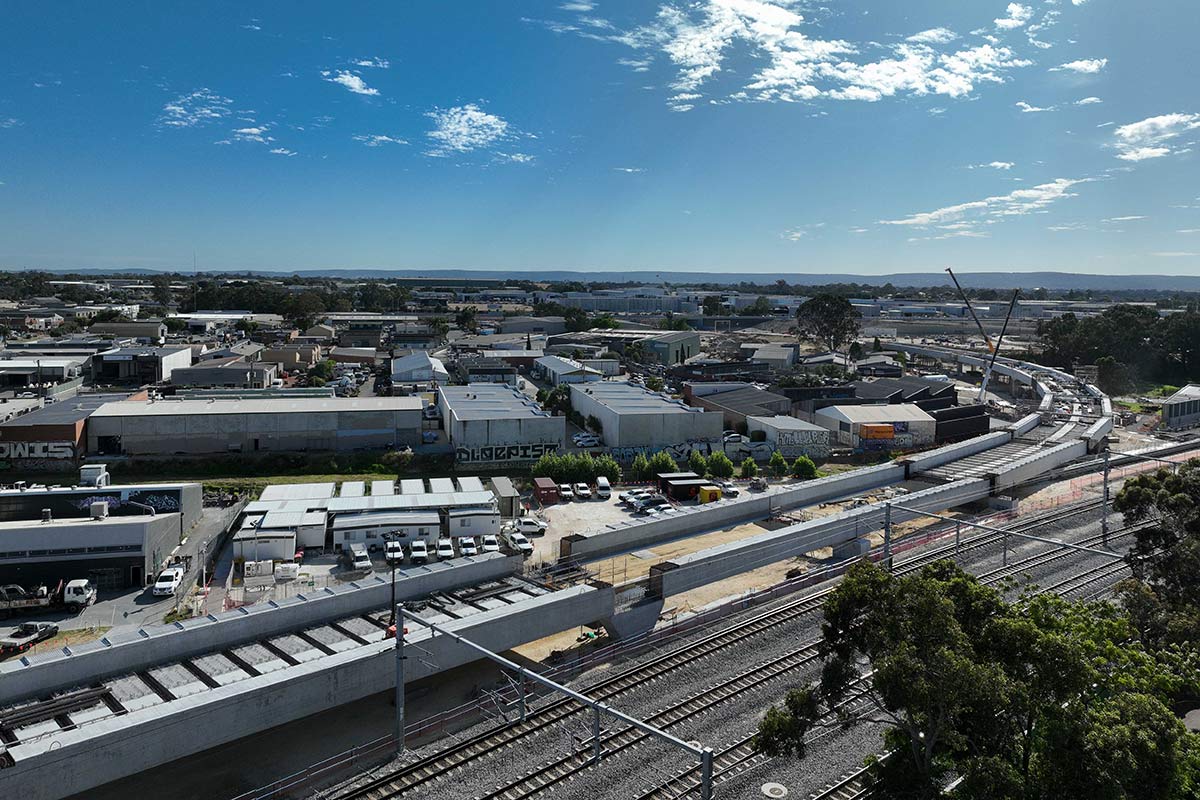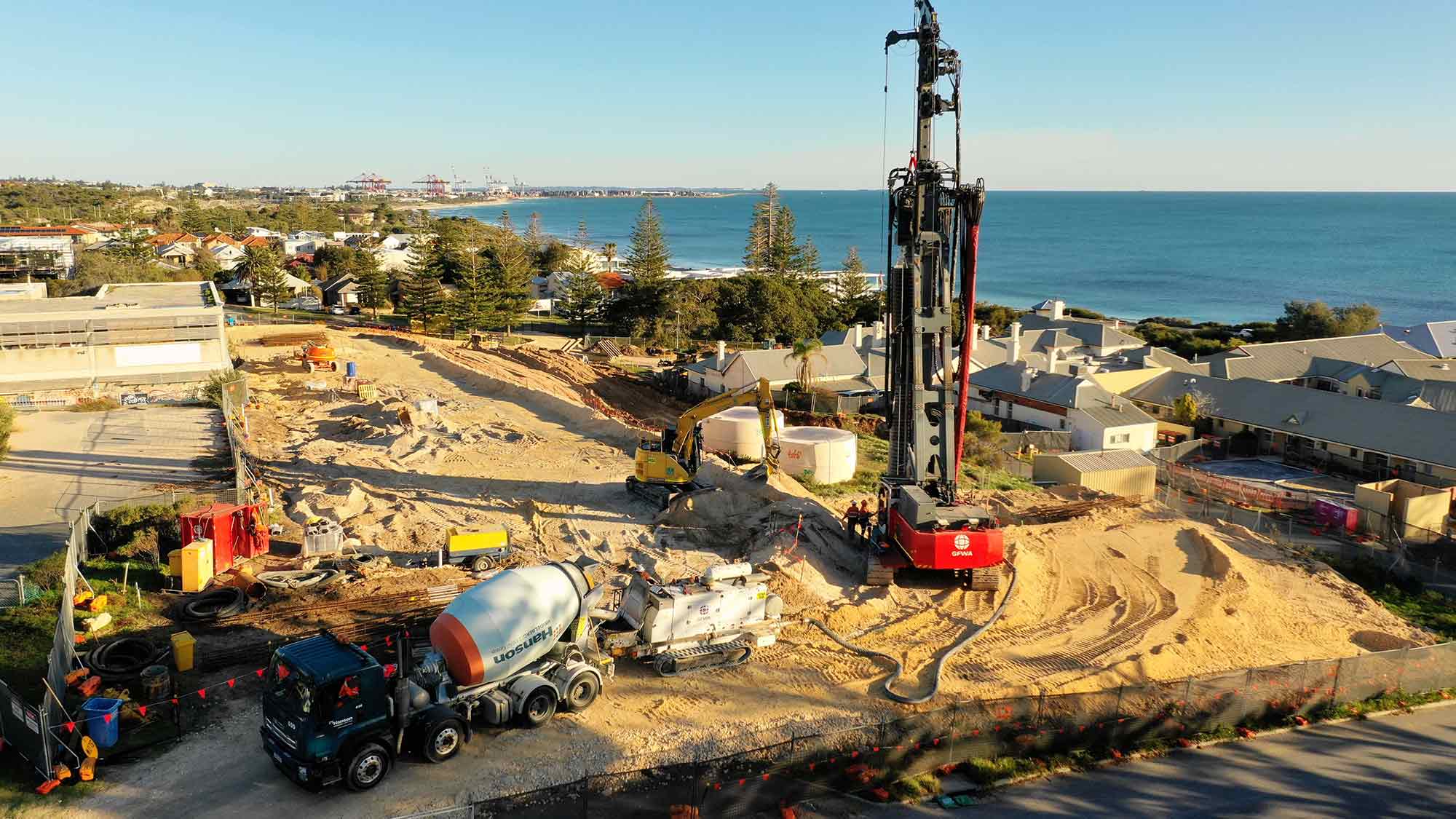Project Description
Bored Piling Services for Robust Foundations
GFWA’s bored piles expertise is proven on numerous projects throughout Australia.
Bored Piles: Essential for heavy infrastructure projects and high-rise buildings. This method provides strong and stable foundations for large-scale constructions.
Our processes
Stage 1: Site Preparation
The site is cleared, and the locations of the bored piles are marked. Access for drilling equipment and materials is ensured, and any obstacles are removed. The site preparation ensures that the area is ready for the arrival of drilling equipment.
Stage 2: Drilling
Boreholes are drilled to the required depth using a rotary drilling rig. The borehole diameter and depth are specified by the project requirements. The drilling process must be carefully controlled to ensure proper positioning and depth.
Stage 3: Casing Installation (if necessary)
Temporary casing is installed to support the borehole walls if required by soil conditions. The casing prevents soil collapse and maintains the integrity of the borehole. The casing is installed as drilling progresses and removed after concrete placement.
Stage 4: Reinforcement Installation
A steel reinforcement cage is lowered into the borehole. The cage consists of interconnected vertical and horizontal steel bars tied together to form a rigid structure. The reinforcement provides the necessary structural strength to the pile.
Stage 5: Concrete Placement
Concrete is poured into the borehole using tremie pipes or direct pouring. The concrete must be of high quality and placed carefully to ensure it completely fills the borehole and surrounds the reinforcement cage. The concrete is poured from the bottom up to prevent segregation.
Stage 6: Casing Removal
The temporary casing is withdrawn as concrete is poured to ensure continuous concrete placement. This prevents gaps or weak points in the pile and ensures a solid, continuous pile.
Stage 7: Quality Control
The piles are inspected for diameter, depth, and concrete quality. Non-destructive testing methods such as sonic integrity testing or load testing may be used to assess the quality of the piles. Ensuring that the piles meet all design and safety standards is essential for the success of the project.
Related projects

